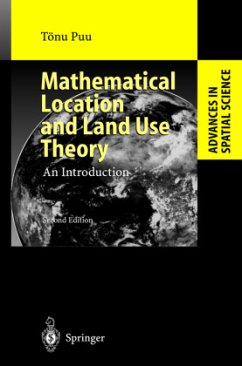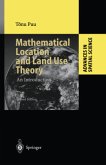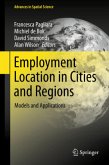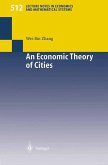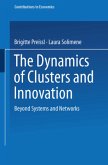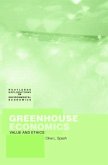Covers all main topics of spatial economics, plant location, the theory of nested market areas, including rank-size relations, spatial competition and pricing, land use theory and the emergence of specialization and trade, commuting and traffic distributions according to the gravity and entropy hypotheses, migration, and the layout of transportation networks. A strong focus is on the continuous two dimensional geographical space, with Beckmann's continuous flow model as central piece. Another feature is a focus on structural stability rather than optimality of emergent patterns. All the specific mathematical tools needed are developed within context. The whole approach is intuitive, and supported by lavish computer graphics. The new edition contains extensive material on spatial competition, oligopoly theory in Hotelling's setup. The Hotelling case is formally worked out with elastic demand, which limits the occurrence of some of the confusing paradoxes Hotelling found for inelastic demand.
Extracts from reviews of the first edition: "This book is an excellent introduction to the theory of continuous location of economic activities in two-dimensional space based on differential equations and to their solution by vector calculus methods. As Puu states "good science is to be easily understood. This book is, indeed, a lucid and easily readable introduction to the fundamental concepts of spatial economic theory and the differential calculus machinery of the continuous transportation model." K. C. Mosler in "Location Science" "This book represents an honest attempt at introducing spatial economic theory. The author does not appear to be interested in showing off his obvious mathematical skills. His intention is to summarize the accumulated knowledge in the field and present the main results in a simple manner. He does an admirable job. Of help are the high-quality graphics, the omission of semicooked ideas and messy results, and the author's extensive experience on the subject over a long period of time." P. S. Kanaroglou in "Environment and Planning"
Extracts from reviews of the first edition:
"This book is an excellent introduction to the theory of continuous location of economic activities in two-dimensional space based on differential equations and to their solution by vector calculus methods. As Puu states "good science is to be easily understood. This book is, indeed, a lucid and easily readable introduction to the fundamental concepts of spatial economic theory and the differential calculus machinery of the continuous transportation model."
K. C. Mosler in "Location Science"
"This book represents an honest attempt at introducing spatial economic theory. The author does not appear to be interested in showing off his obvious mathematical skills. His intention is to summarize the accumulated knowledge in the field and present the main results in a simple manner. He does an admirable job. Of help are the high-quality graphics, the omission of semicooked ideas and messy results, and the author's extensive experience on the subject over a long period of time."
P. S. Kanaroglou in "Environment and Planning"
"This book is an excellent introduction to the theory of continuous location of economic activities in two-dimensional space based on differential equations and to their solution by vector calculus methods. As Puu states "good science is to be easily understood. This book is, indeed, a lucid and easily readable introduction to the fundamental concepts of spatial economic theory and the differential calculus machinery of the continuous transportation model."
K. C. Mosler in "Location Science"
"This book represents an honest attempt at introducing spatial economic theory. The author does not appear to be interested in showing off his obvious mathematical skills. His intention is to summarize the accumulated knowledge in the field and present the main results in a simple manner. He does an admirable job. Of help are the high-quality graphics, the omission of semicooked ideas and messy results, and the author's extensive experience on the subject over a long period of time."
P. S. Kanaroglou in "Environment and Planning"

